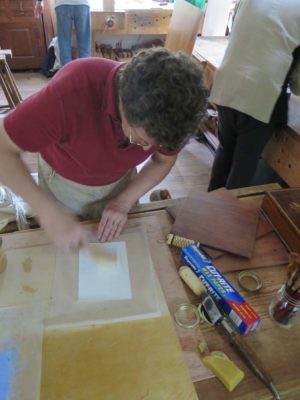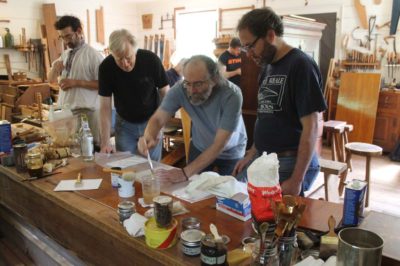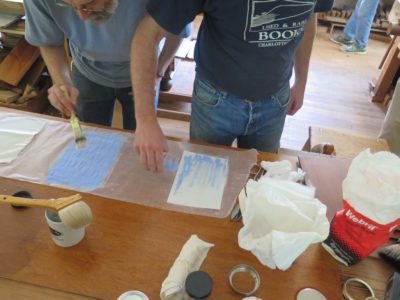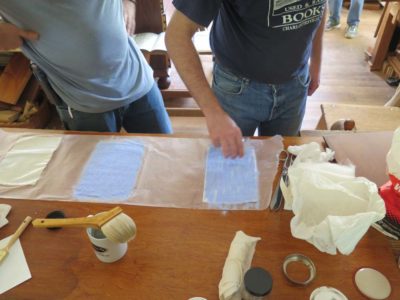Finishing Workshop @ CW – Making Sandpaper
In preparing for the sessions at The Anthony Hay Shop of CW I decided at the last minute to toss in the materials needed to make sandpaper, not knowing whitener or not there would be any interest. It turned out that a lot of the participants were indeed interested, and several told me a very common question from the visiting public was some variation of, “Did they have sandpaper in the old days?”
So I’m glad I had what was needed.

We started with moderate weight rag paper, albeit machine made, not hand cast (maybe next time).

Wetting the paper both sides relaxed it so it would pucker less when the hot glue was applied to one side.

We were using 135 gws glue since it had plenty of adhesion properties plus was much more flexible than higher grades, making it more usable since it would not fracture when bent.


Once the glue has been on the paper long enough such that it is tacky but not wet, the surface is sprinkled with fine frit, the ground glass that was often used as the abrasive for some ancient sandpapers (hence the common terminology of “glass paper”). You want the glue tacky enough to adhere the frit, but not wet enough to soak into it and turn it into a big chunk on the surface.


The glued sheet with frit is shaken or brushed so that the frit covers the whole surface, and the piece is set aside. Once the glue has hardened adequately the excess frit is brushed or shaken off and the sheet is allowed to dry fully.
And voila’, you have a genuine new piece of antique sandpaper about 180 grit.



Join the Conversation!